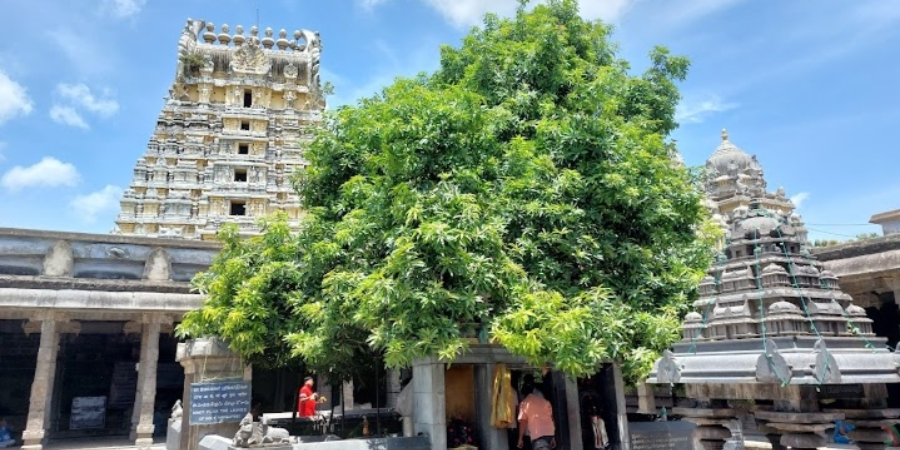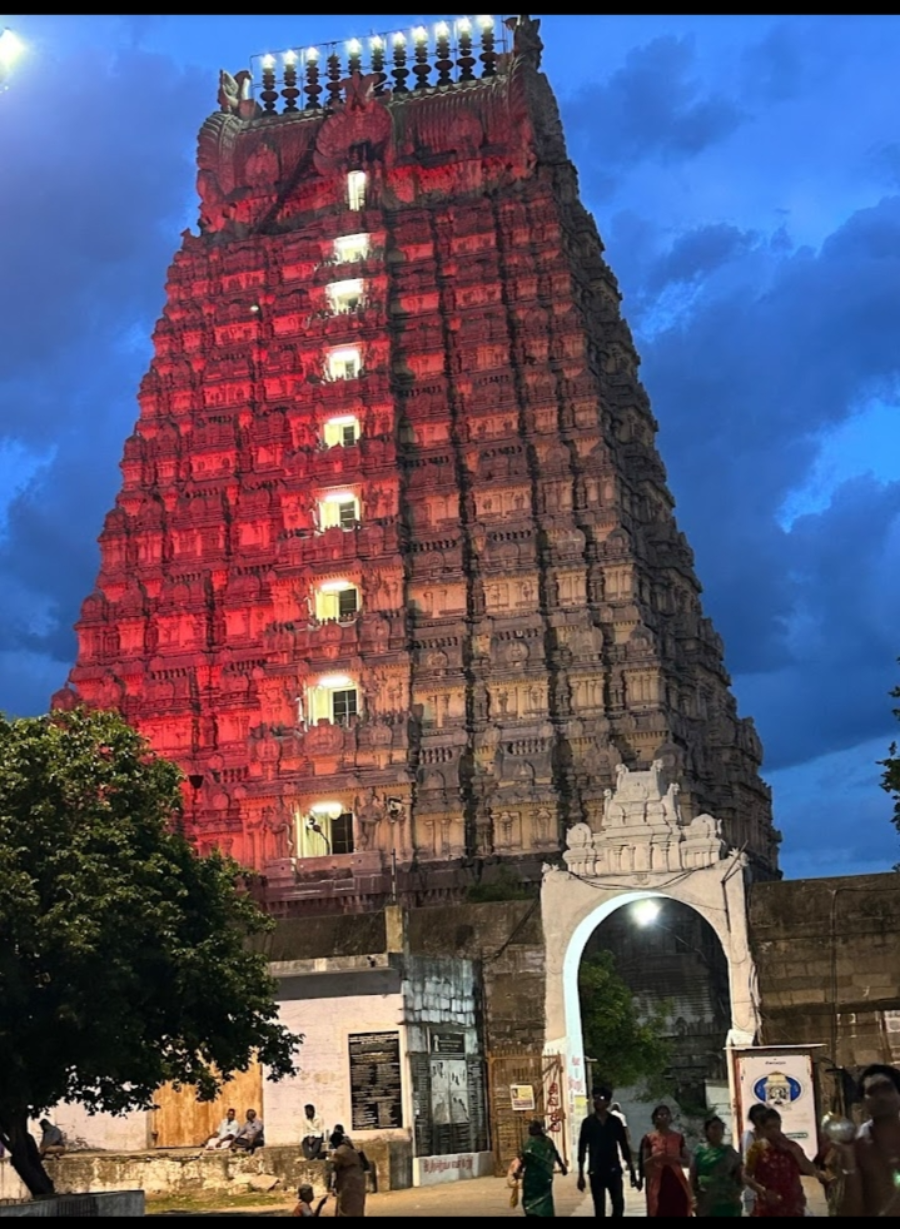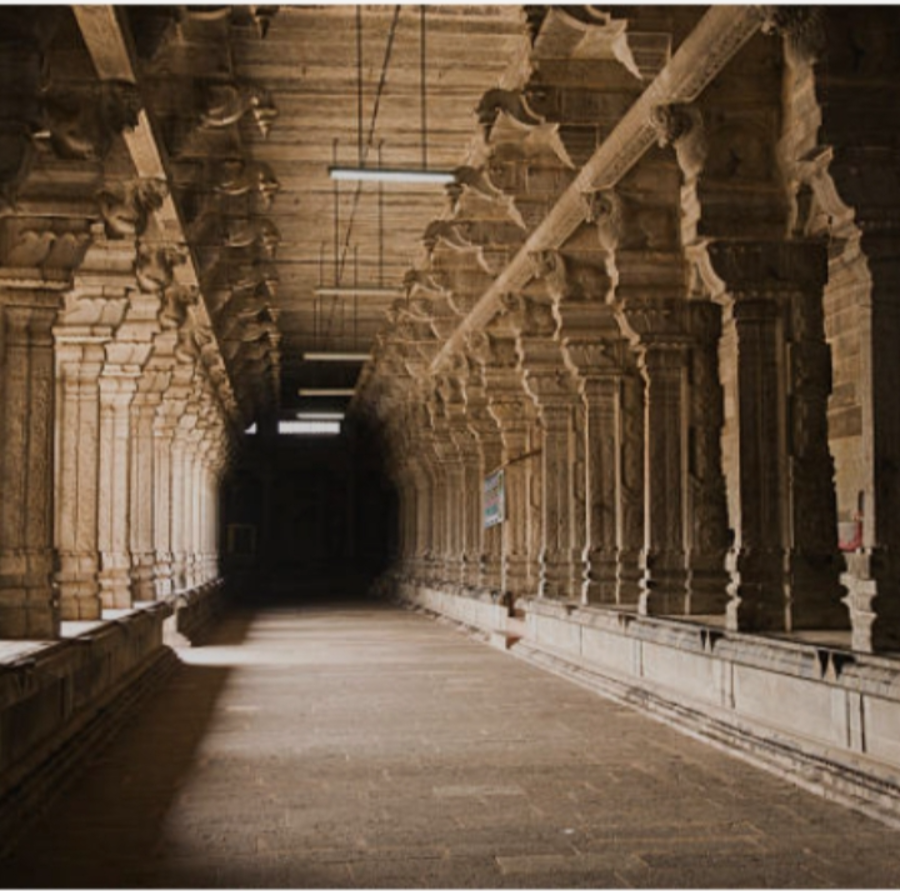

It's an intriguing temple with a lengthy past. It is one of the temples connected to the Stalam of Panch Bhoota.
The five sacred temples of Lord Shiva comprise Panch Bhoota Stalam. Additionally, these five temples have important and essential connotations.
being the physical embodiment of the Earth, Water, Fire, Air, and Space components of nature.
Nature's five elements representing the five components that make up every life and the essential meaning of life itself.

Among the temples symbolising the element earth, or Prithvi, is Ekambaranathar Temple.(The representation of Shiva as a lingam is symbolised by each of the five lingams. Thiruvanaikaval, Chidambaram, Thiruvannamalai, and Srikalahasti are the locations of the remaining four lingams, which stand for Water, Sky, Agni, and Air, respectively.
The Shiva Lingam known as Ekambareshwarar or Ekambaranathar is worshipped and is a representation of Lord Shiva. His consort, the goddess Parvati, is honoured as Elavarkuzhali, also known as kamakshi.
Among the top seven pilgrimage sites in India, Ekambareshwar is a popular tourist destination. It's one of Kanchipuram's foremost temples. The temple complex covered an area of forty acres.There has been a temple like this for at least 600 AD. It was destroyed and rebuilt by several monarchs over a period of thousands of years.
The temple was originally mounted by Pallavas. Kachiyapper was a Vedantist and poet. He was a priest in the temple that the Chola Kings had reconstructed after it had been destroyed. The Vijayanagar king Krishna Deva Raya made some important construction contributions to the temple later in the 15th century, during the succeeding Vijayanagar dynasty.
This ancient temple was known for several architectural marvels. Its most notable aspect is the principal entryway or the majestic 172-foot-tall Raja Gopuram.With 11 floors and a height of 192 feet, the southern one is the largest and ranks among India's tallest temple towers.

One of the greatest essential traits of the temple is the “Sthala Vriksham,” or the ancient temples mango tree, which is more than 3500 years old and under which Kamakshi/Elavarkuzhali worshipped the Shiva Lingam.

A prominent aspect of the temple is the Vijayanagara Kings' construction of the Aayiram Kaal Mandapam, often known as the "hallway with a thousand pillars."
In terms of literary allusions, this temple has been referenced numerous times over the ages. The sixth century is also mentioned, as are the three most well-known Saivite poets of the seventh and eighth centuries, Sambandar, Appar, and Sundarar.
The Panguni Brahmotsavam is the most significant of the numerous festivals connected to and observed at the temple. spans ten days, from March to April, coincides with Panguni, the Tamil month.
This is all the little information about the temple, folks. In the following section, we'll look at the historic tale behind the temple, an intriguing mystery regarding its construction, and the ancient temple mango tree, known as “Sthala Vriksham.”
